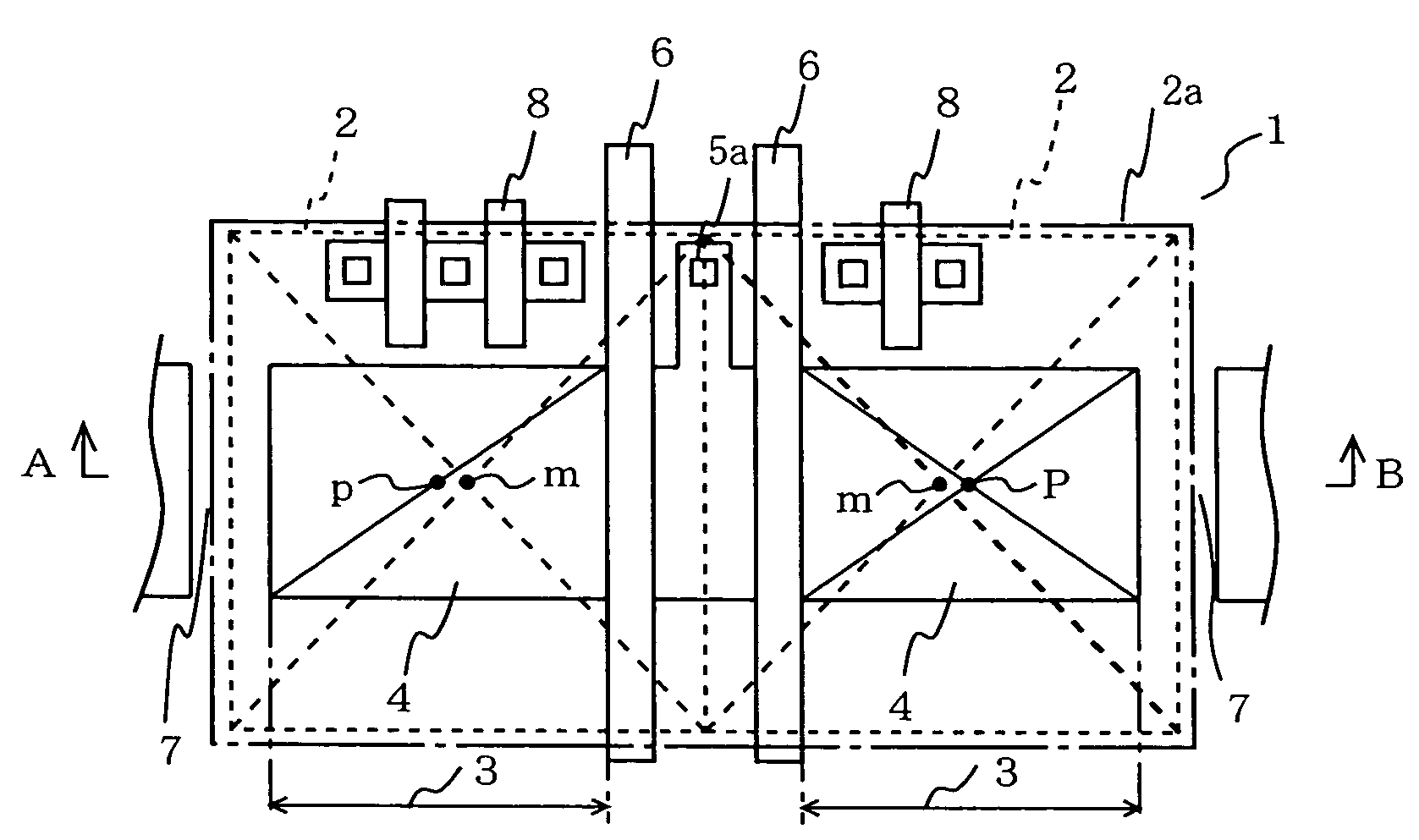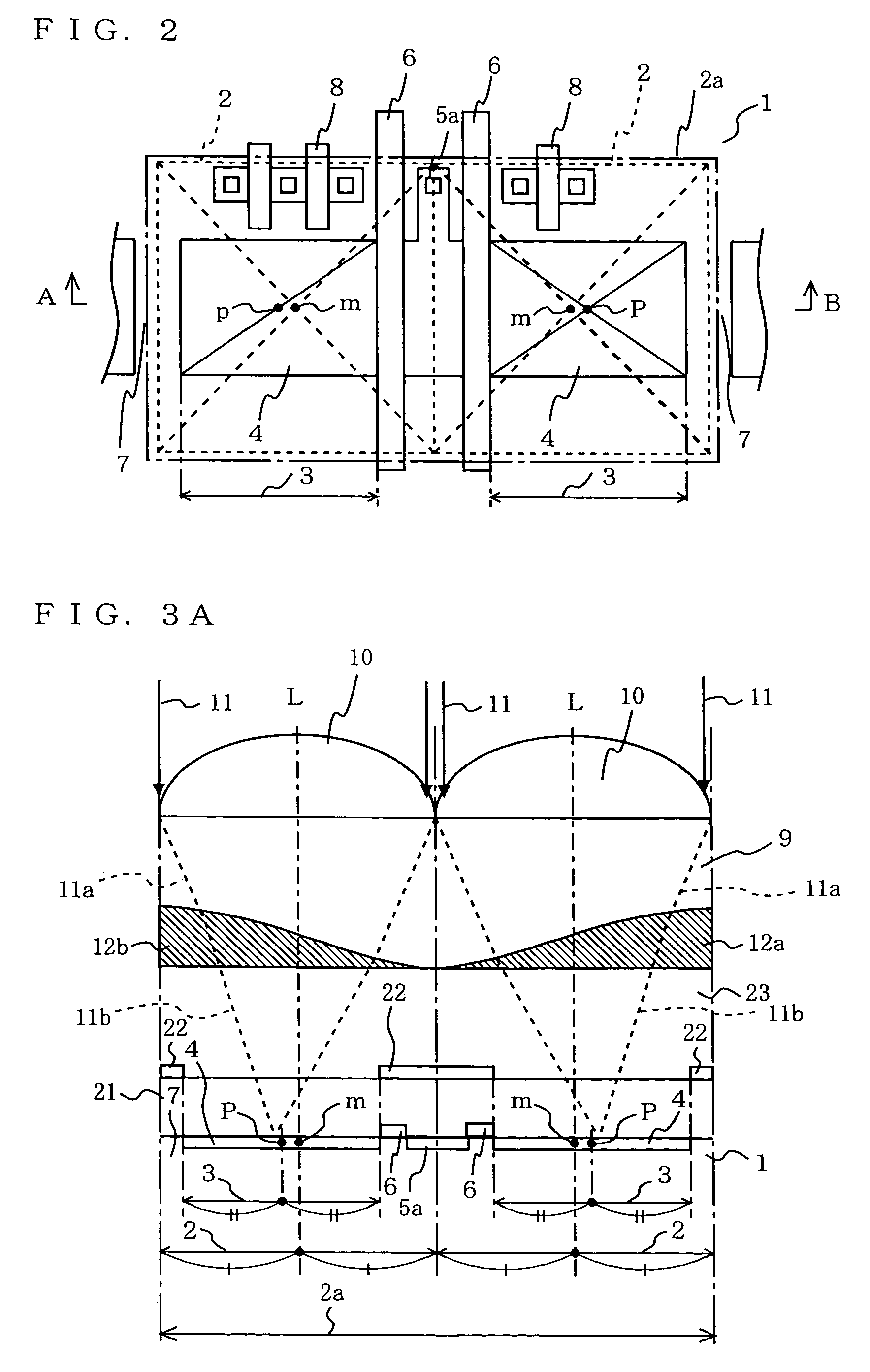Solid-state imaging device and camera
a solid-state imaging and camera technology, applied in the field of solid-state imaging devices, can solve the problems of deteriorating image sensitivity, aberration, color shading, sensitivity shading, etc., and achieves the effects of high light condensation rate, excellent image quality, and high image sensitivity
- Summary
- Abstract
- Description
- Claims
- Application Information
AI Technical Summary
Benefits of technology
Problems solved by technology
Method used
Image
Examples
Embodiment Construction
[0049]A solid-state imaging device according to an embodiment of the present invention is described below with reference to the accompanying figures, illustrating an exemplary solid-state imaging device in which every two pixels define one cell.
[0050]FIG. 1 is a schematic top plan view for illustrating positional relationships between pixels and light-sensitive areas of a solid-state imaging device in which a plurality of pixels are arranged in a two-dimensional arrangement, e.g., a matrix.
[0051]The solid-state imaging device shown in FIG. 1 includes a semiconductor substrate 1, pixels 2, and light-sensitive areas 3. As the semiconductor substrate 1, a p-type silicon substrate is generally used. On the semiconductor substrate 1, a plurality of pixels 2 are arranged in a matrix and, in addition, units 2a of pixels, each unit 2a of pixels being constituted by two pixels defining one cell (unit), are constructed. Herein, the pixels 2 and the units 2a of pixels are shown as projections ...
PUM
 Login to View More
Login to View More Abstract
Description
Claims
Application Information
 Login to View More
Login to View More - R&D
- Intellectual Property
- Life Sciences
- Materials
- Tech Scout
- Unparalleled Data Quality
- Higher Quality Content
- 60% Fewer Hallucinations
Browse by: Latest US Patents, China's latest patents, Technical Efficacy Thesaurus, Application Domain, Technology Topic, Popular Technical Reports.
© 2025 PatSnap. All rights reserved.Legal|Privacy policy|Modern Slavery Act Transparency Statement|Sitemap|About US| Contact US: help@patsnap.com



